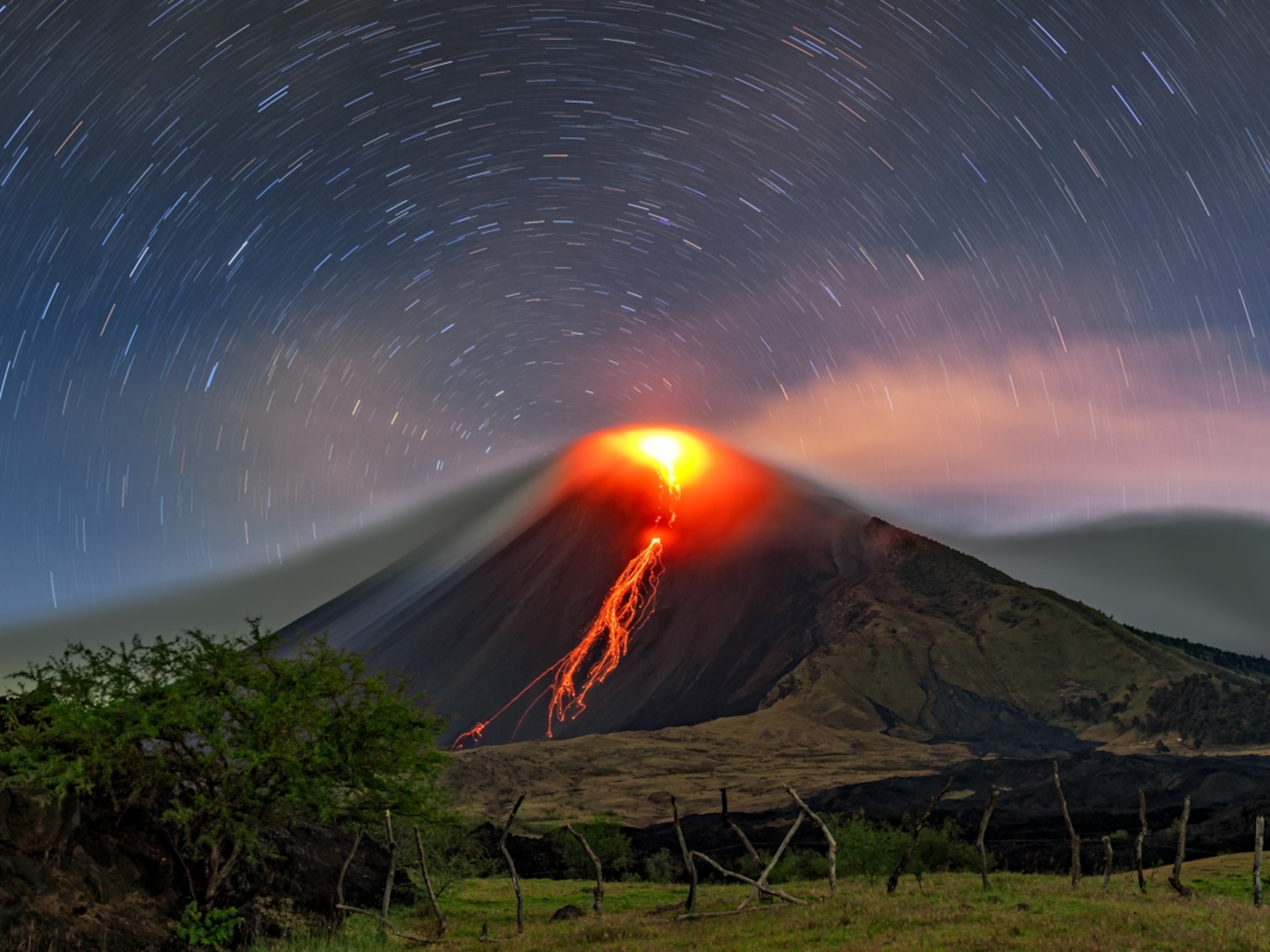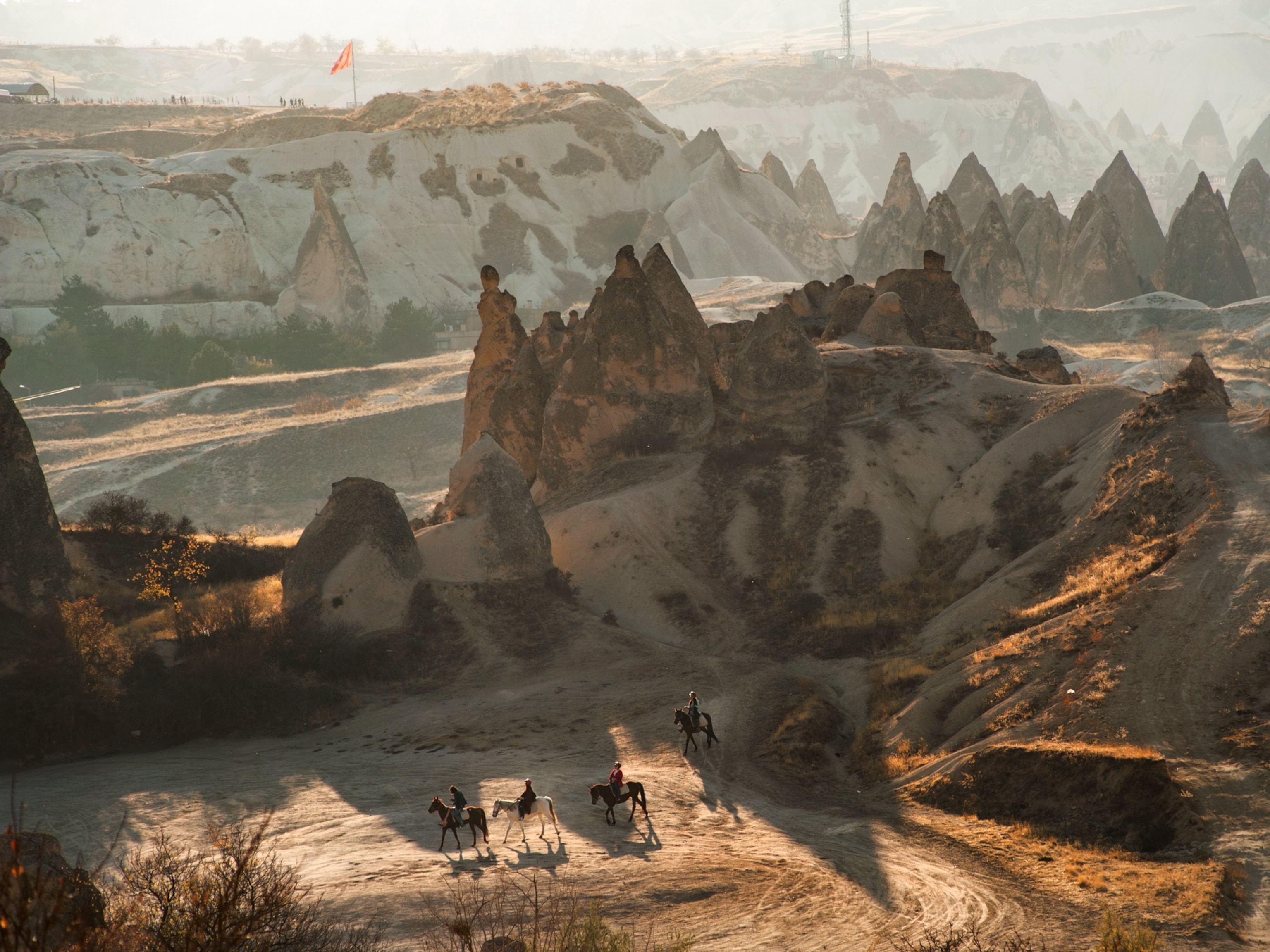
New Magma Layer Found Deep in Earth's Mantle?
A layer of molten rock trapped since Earth's formation may exist where the solid mantle meets the core, a new study says.
A layer of searing hot liquid magma trapped since Earth's formation may lie 1,800 miles (2,900 kilometers) beneath our feet, new research suggests.
The finding backs up theories that Earth's solid lower mantle once housed a magma "ocean," and that some remnant of that molten material still exists today, like jam between two cake layers.
"Some models consider the [early] Earth to have been completely or largely molten, and people are looking for possible remnants or relics of this molten state," said study co-author Guillaume Fiquet of the Institut de Minéralogie et de Physique des Milieux Condensés at France's Université Pierre et Marie Curie.
"Those models [suggest] that, as time passed and Earth solidified, some molten rock could have been trapped at the bottom of the mantle-core boundary."
(Related: "Infant, Magma-Ball Earth Glimpsed Via Newfound Rocks.")
In a new experiment, Fiquet and colleagues showed what would happen to minerals found in Earth's mantle if exposed to the unimaginable heat and pressure that exist at this boundary region.
Their findings not only affect theories for how Earth's insides are structured but also imply that some volcanoes might be spewing lava from magma plumes that brush against Earth's core.
Diamonds Help Re-create Deep Earth Conditions
Based on the rate at which seismic waves travel through Earth, scientists think our planet's core is made of a solid iron ball surrounded by a liquid iron shell. Above the core lie the solid lower mantle, upper mantle, and crust. (Get an overview of Earth's layers).
This liquid layer around the core meets Earth's lower mantle about 1,800 miles (2,900 kilometers) below the surface. Temperatures at the core-mantle boundary hover around 4,000 Kelvin (6,740 degrees F, or 3,727 degrees C), and the pressure is nearly 140 gigapascals—1.4 million times greater than standard air pressure at sea level.
Without a way to take direct samples from deep inside Earth, no one knows for sure if the mantle's boundary rocks are solid or liquid. (Also see: "'First Contact With Inner Earth': Drillers Strike Magma.")
But scientists have long recorded dramatic drops in the speeds of seismic waves near the core-mantle boundary, leading some experts to speculate that this region is partially melted.
To simulate the extreme subterranean environment, Fiquet and colleagues put samples of typical mantle materials—magnesium oxides, iron, and silicon—into diamond anvil cells, small chambers in which microscopic samples get crushed between two diamonds.
The intense crushing heated the samples to temperatures greater than 5,000 Kelvin (8,540 degrees F, or 4,726 degrees C) and raised the pressure to 140 gigapascals. Using a technique called x-ray diffraction, the scientists then shone light on the minerals' atomic structures and saw when the material started to change from a solid to a liquid.
Mantle minerals started to melt at 4,200 Kelvin (7,100 degrees F, or 3,926 degrees C)—just about the temperature of the core-mantle boundary.
"Hot Spot" Volcanoes Fed by Ultradeep Magma?
Fiquet cautions against using the term "magma ocean" to describe the potentially melted layer deep inside Earth: "The basic thing to remember is that the mantle is solid rock, but it might also be partially molten at the base."
Still, the molten rock created during the experiment might hold chemical markers that could help researchers understand how Earth's molten material cooled and separated into layers over time, the study authors say.
The finding may also have ramifications for studies of volcanoes. Many volcanoes, such as those in the Pacific Ring of Fire, exist where tectonic plates meet, and the volcanoes are filled with magma generated by melting of the upper mantle.
But so-called hot spot volcanoes, such as Hawaii's, are thought to be fed by plumes of hot rock rising from deeper within Earth. (See "Under Yellowstone, Magma Pocket 20 Percent Larger Than Thought.")
"I think the plumes could have their sources in very hot regions at the core-mantle boundary that might be partially molten," Fiquet said.
"But to make a strong link with the plumes and their associated volcanism, we'll next have to ... test all the individual components that are likely to be buried down at that core-mantle boundary."





